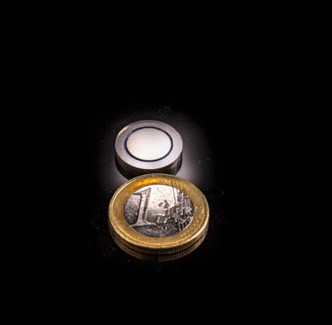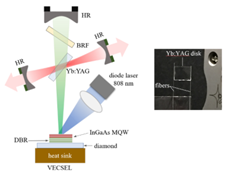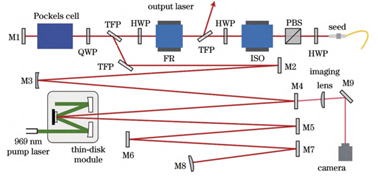1.Introduction
This article describes Yb:YAG crystal application for ultrafast research. Yb:YAG crystals, i.e. Ytterbium-doped yttrium aluminum garnet crystals are playing an increasingly important role in scientific research due to their excellent physical properties. Yb:YAG, as a special laser-working substance, not only inherits the outstanding physical properties and stable chemical properties of YAG matrix materials but also demonstrates good laser working performance due to its higher lifetime of the upper energy level of the laser.
Under the same semiconductor pump power, the heat load per unit pump power of Yb:YAG is only one-third of that of Nd:YAG, which makes it have better heat dissipation performance in high-power laser operation and effectively reduces the influence of thermal effects on laser output. The Yb:YAG Crystal Application are described below.
2. High-Frequency DPSS Femtosecond Lasers
Yb:YAG crystals are ideal gain media for high heavy-frequency all-solid-state femtosecond laser amplifiers due to their high thermal conductivity, long upper energy level lifetime, and wide emission bandwidth.
Applying Yb:YAG crystals is crucial in industrial ultrafast non-thermal micromachining, extreme ultraviolet optical frequency combs, high-throughput high harmonic generation, and angle-resolved electron momentum spectroscopy. Through the chirped pulse amplification (CPA) technique, Yb:YAG crystals (8 mm length, 6 mm diameter, 3 at.% doping, AR coating) can achieve femtosecond laser output with kHz-scale repetition frequencies and mJ-scale energies, which is important for driving high-temperature, high-density plasmas and self-organized amplification of strong magnetic field arrays.
3.Disk Lasers
Disk lasers, with their advantages in structure, efficiency, and beam quality, have demonstrated great capability in realizing ultrafast lasers with high repetition frequencies, large pulse energies, and high average powers.
The Yb:YAG crystal application in disk lasers has enabled researchers to achieve high-energy, high-beam-quality laser outputs [4]. For example, the Changchun Institute of Optics, Fine Mechanics and Physics, CIOMP utilized a single-disk regenerative amplifier with a Yb:YAG crystal (215 µm thick, 12 mm diameter, 7 at.% doping, AR coating, and two BBO crystals with dimensions of 10 mm × 10 mm × 25 mm to achieve λ/4 phase modulation) to achieve a laser output at a repetition frequency of 1 kHz and a single pulse energy of 107 mJ, which was the first time in China that a Yb:YAG crystal was used in a disk laser. A laser output of 1 kHz repetition frequency and 107 mJ single pulse energy was achieved, which is the first time to achieve this achievement in China.

Fig 1. Disk-like Yb:YAG Crystal
*The Picture Comes from Dausinger + Giesen GmbH
4. Radiation-Balanced Lasers (RBL)
In the study of radiatively balanced lasers (RBL), Yb:YAG crystals have been used to achieve self-cooling of lasers, thereby reducing thermal degradation and improving laser efficiency [6]. By precisely controlling the wavelengths of the pump and laser light, Yb:YAG crystals (4 mm long, 5 mm wide, 0.5 mm thick, 5 at.% doped, AR coating system) can balance the heat generated by quantum defects and non-radiative attenuation with fluorescence-induced cooling to enable high-power continuous wave (CW) operation.

Fig 2. Schematic Diagram of the Yb:YAG-based RBL Research Device[7]
5. Regenerative Amplifiers with High Stability and Efficiency
Yb:YAG crystals have also been used to build regenerative amplifiers with high stability and optical efficiency. Researchers at the Shanghai Institute of Optics and Fine Mechanics, SIOM, designed and constructed a regenerative amplifier system based on a Yb:YAG monolithic laser module (215 µm thick, 9 mm in diameter, 7 at.% doping, AR coating; two BBO crystals with dimensions of 12 mm × 12 mm × 20 mm were used to achieve λ/4 phase modulation), and realized a regenerative amplification system with average power of 40.9 W, repetition frequency of 1 kHz, pulse width of 3.4 ns, and optical-to-optical conversion efficiency of 16.0%. A laser output with an average power of 40.9 W, a repetition frequency of 1 kHz, and a pulse width of 3.4 ns was achieved, and the optical-to-optical conversion efficiency reached 16.1%.

Fig 3. Schematic Diagram of Yb:YAG-based Regenerative Amplification Laser Device [9]
In addition, a regenerative amplification system based on a Yb:YAG thin-film laser module (100 μm thick, 12.7 mm diameter, 7 at.% doping, AR coating; coupled with two BBO crystals with dimensions of 6 mm × 6 mm × 20 mm to achieve λ/4 phase modulation) was also designed and constructed by a team of technicians from the University of Science and Technology of China (USTC), and a near-diffraction-limited laser output was achieved with an output power of 720 ps and maximum pulse energy of more than 6 mJ at a repetition frequency of 50 kHz [9]. A near-diffraction-limited laser output with a repetition frequency of 50 kHz, an output power of 312 W, a pulse width of 720 ps, and a maximum pulse energy of more than 6 mJ was achieved [9]. This achievement marks a breakthrough in terms of output power and photo-optical efficiency.
6.Conclusion
In summary, Yb:YAG crystals, due to their unique physical properties, have been increasingly used in scientific research, especially in the design and realization of laser systems with high power, high re-frequency, and high beam quality, which play a key role. With the continuous advancement of technology, Yb:YAG crystals are expected to play an even more important role in future scientific research and industrial applications.
Reference
[1] Zhou Y, Meng J, Albrecht A R, et al. Radiation-balanced Yb:YAG disk laser[J]. Optics Express, 2019, 27(2): 1392-1401.
[2] Giesen A, Hügel H, Voss A, et al. Scalable concept for diode-pumped high-power solid-state lasers[J]. Applied Physics B, 1994, 58(5): 365-372.
[3] Bowman S R. Lasers without internal heat generation[J]. IEEE J. Quantum Electron. 1999, 35(1): 115-122.
[4] Schad S S, Gottwald T, Kuhn V, et al. Recent development of disk lasers at TRUMPF[J]. Proceedings of SPIE, 2016, 9726: 972615.
[5] Chen F, Yu J H, Chen Y, et al. 107 mJ Yb:YAG single thin-disk regenerative amplifier[J]. Chinese Journal of Lasers, 2023, 50(5): 0515001.
[6] Bowman S R. Optimizing average power in low quantum defect lasers[J]. Applied Optics, 2015, 54(31): F78-F84.
[7] Bowman S R, O’Connor S P, Biswal S, et al. Minimizing heat generation in solid-state lasers[J]. IEEE J. Quantum Electron. 2010, 46(7): 1076-1085.
[8] Shi Y S, Li Z Q, Pan X, et al. High stable and high optical-to-optical efficiency Yb:YAG single-disk regenerative amplifier[J]. Chinese Journal of Lasers, 2023, 51(2): 0201005.
[9] Lei X Y, Dai L H, Su M, et al. The Output Power of Domestic Yb:YAG Thin-disk Regenerative Amplifier Exceeds 300 W[J]. Chinese Journal of Lasers, 2024, 51(19): 1915002.

Frank
Frank graduated from the University of Shanghai for Science and Technology, majoring in optics. As a technical engineer at Crylink Company, he deeply understands crystal materials and laser components.
Related Video(s) with this Article
Related Product(s) with this Article
Related Application(s) with this Article
